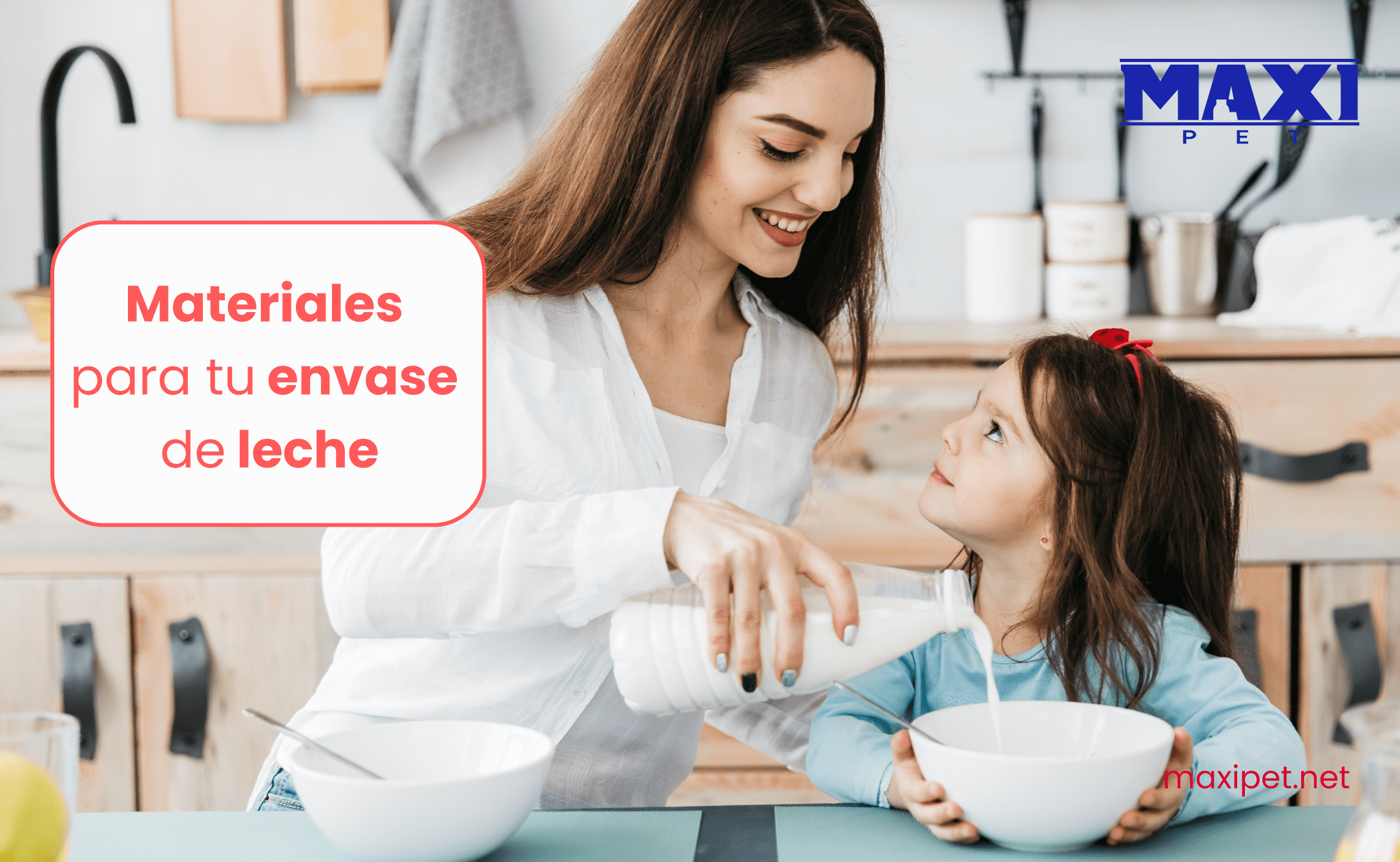Materials for your milk container

Choosing the ideal material for a milk container is essential to consider the level of protection and the conservation technique to improve the quality and safety of the product. Milk, which contains essential oils and fats, tends to oxidize quickly.
For example, the shelf life of pasteurized milk is seven days, however, it is very important to find the perfect container to keep it fresh at low temperatures. In the case of ultra-pasteurized milk, its shelf life is 3 to 6 months and it can be kept at room temperature as long as the container offers a protective barrier against light or UV rays. Learn everything you need to know to choose the best material for a milk container.
Paperboard
They are mainly used in the food industry, they are very light and thanks to advances in technology it is possible to store milk for a long time without any inconvenience. However, it is important to mention that these containers need a layer of plastic so that the liquids do not soften the cardboard since this material does not have the impermeability characteristic of plastic.
Glass
To make glass, silica sand, sodium carbonate, and limestone are required, these three elements, among others, must be melted at high temperatures in a furnace. This material is often chosen as a packaging material for its recyclable, reusable qualities.
In the case of glass bottles, these have a composition that does not alter the taste of milk. However, it is difficult to transport due to its weight, and therefore it is more expensive to pay for it due to fuel costs. Consequently, although many companies continue to choose this option, most decided to replace them with plastic.
Why should you choose PET containers?
Better known as PET by its English name (polyethylene terephthalate), it is one of the most used materials to make plastic containers and bottles. This type of material is characterized by being crystalline, light, flexible, and very resistant.
PET offers many benefits for all types of products in the food and beverage industry. In the case of milk, it is a shock-resistant material that protects from air, light, and microorganisms, and preserves liquid food at the ideal temperature. In addition, one of the main advantages offered by plastic is the customization of the product. If companies take advantage of this opportunity, they can create an innovative design to distinguish themselves from the competition.
Advantages of using PET containers:
- Eases distribution
- Keeps the product in a hygienic condition
- Protects nutrients
- Facilitates product labeling
- Protects from light and oxygen
- Keeps flavor intact
One of the sustainable characteristics of PET for milk containers is that it is a 100% recyclable material and can be used to manufacture clothing, backpacks, shoes, or other functional or decorative items. However, it is important to consider that PET can take many years to decompose, so it is necessary to raise awareness about the correct separation of waste to prevent it from becoming garbage.
Another feature in favor of the environment is that it requires less energy and water for its manufacture and recycling. It has been shown that this material has the lowest carbon footprint compared to other materials such as cardboard or glass and, thanks to its low weight, it facilitates the distribution of the product, and reduces CO2 emissions and the use of gasoline during transport.
What is the ideal container?
Assessing which milk container
is best for you to package your product is quite a challenge. To achieve this, you need to carry out a market study that allows you to know the specific preferences of your consumers. However, containers made with PET are much more resistant, so their transport and storage are safer.
If you have any questions about this topic, we invite you to contact our team, to provide you with adequate advice regarding the needs of the packaging you require according to your product.



